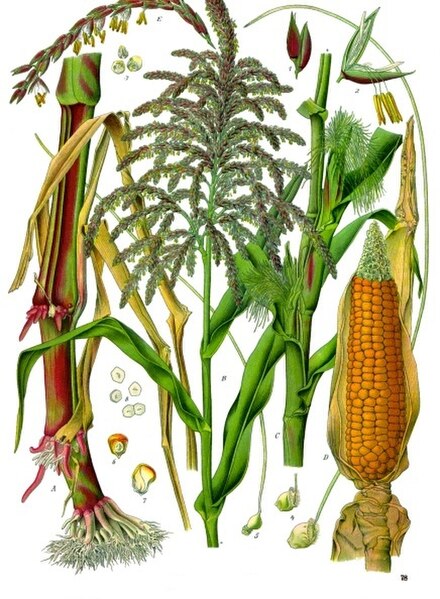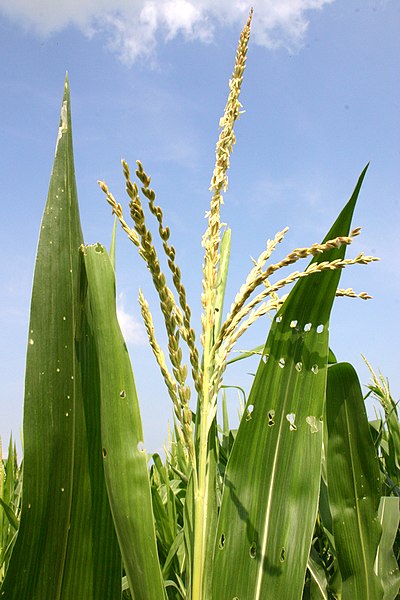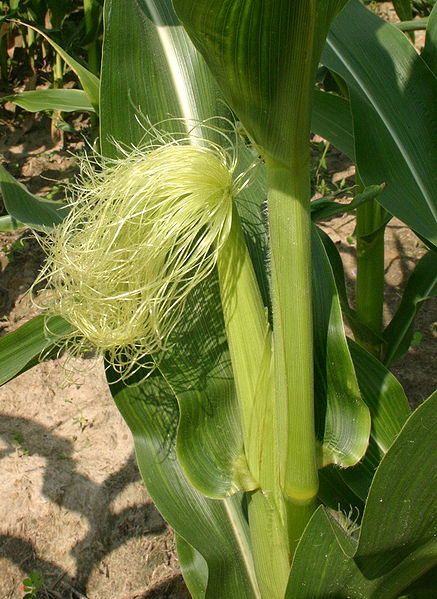Sweet corn, also called sweetcorn, sugar corn and pole corn, is a variety of corn grown for human consumption with a high sugar content. Sweet corn is the result of a naturally occurring recessive mutation in the genes which control conversion of sugar to starch inside the endosperm of the corn kernel. Sweet corn is picked when still immature and prepared and eaten as a vegetable, rather than field corn, which is harvested when the kernels are dry and mature. Since the process of maturation involves converting sugar to starch, sweet corn stores poorly and must be eaten fresh, canned, or frozen, before the kernels become tough and starchy.
Husked sweet corn
Loose kernels of sweet corn
Young sweet corn
The same rows of corn 41 days later at maturity
Maize, also known as corn in North American and Australian English, is a tall stout grass that produces cereal grain. It was domesticated by indigenous peoples in southern Mexico about 9,000 years ago from wild teosinte. Native Americans planted it alongside beans and squashes in the Three Sisters polyculture. The leafy stalk of the plant gives rise to male inflorescences or tassels which produce pollen, and female inflorescences called ears. The ears yield grain, known as kernels or seeds. In modern commercial varieties, these are usually yellow or white; other varieties can be of many colors.
Maize
Ancient Mesoamerican relief sculpture of maize, National Museum of Anthropology of Mexico
Many small male flowers make up the male inflorescence, called the tassel.
Female inflorescence, with young silk








